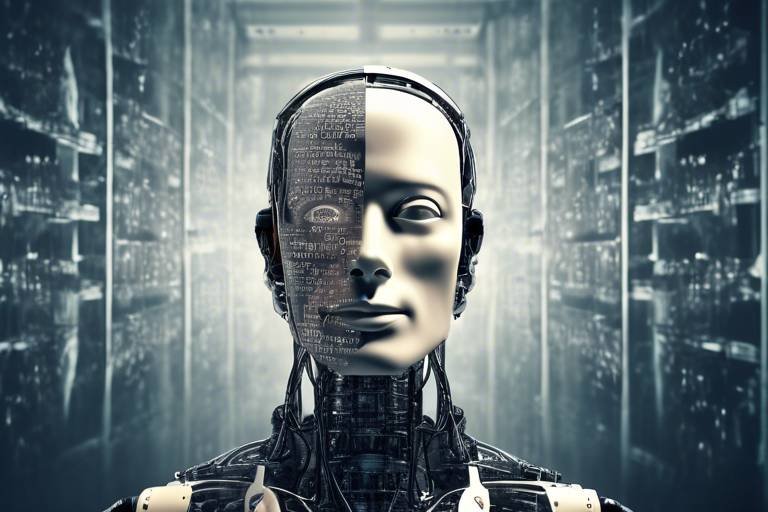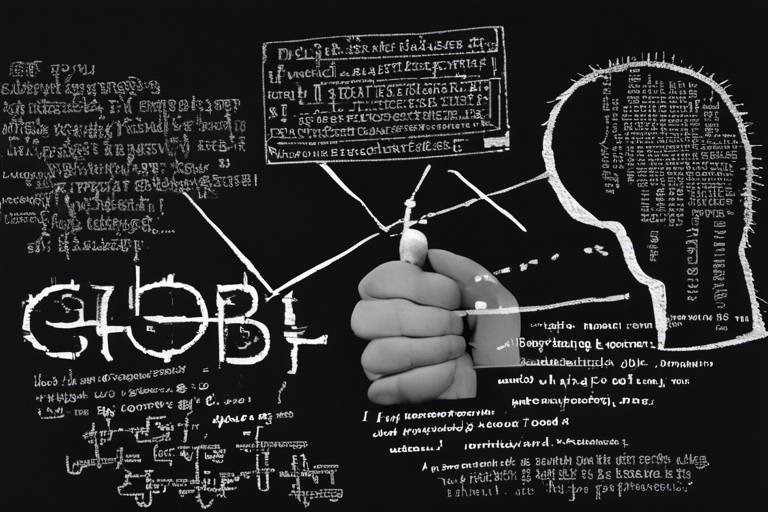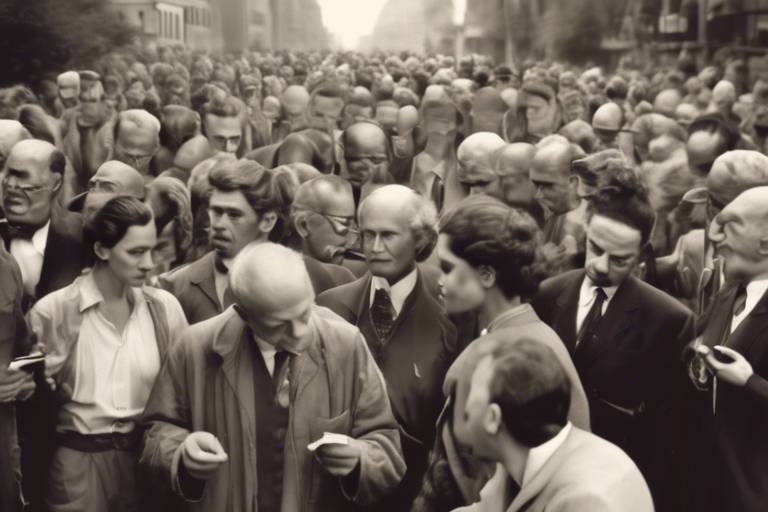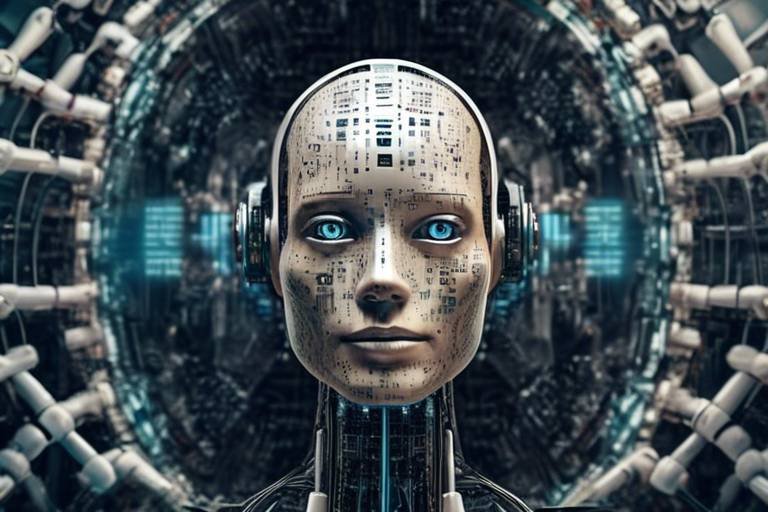Human and Artificial Intelligence - Philosophical Ambiguities
In our rapidly evolving world, the intersection of human intelligence and artificial intelligence (AI) raises profound philosophical questions that challenge our understanding of what it means to be intelligent. As we develop machines capable of performing tasks that once required human cognition, we find ourselves grappling with the implications of these advancements. Are we merely creating sophisticated tools, or are we on the verge of giving birth to a new form of consciousness? This article explores the philosophical dilemmas surrounding human and artificial intelligence, examining their implications on ethics, consciousness, and the very nature of intelligence itself.
The journey begins with defining intelligence itself. Traditionally, intelligence has been viewed as the ability to learn, understand, and apply knowledge. Human intelligence encompasses emotional, social, and creative dimensions, allowing us to navigate complex social landscapes and innovate in ways that machines currently cannot. On the other hand, AI systems excel in processing vast amounts of data at lightning speed, performing calculations, and executing predefined tasks with remarkable precision. This stark contrast leads us to ponder: can AI ever truly replicate the depth of human thought and emotion?
As we delve deeper into this topic, we encounter the concept of consciousness. What does it mean to be self-aware? Human beings possess a rich inner life filled with thoughts, feelings, and experiences that shape our perception of reality. In contrast, AI operates based on algorithms and data without any subjective experience. This raises an intriguing question: can a machine ever achieve a state of consciousness similar to that of humans? Or will AI remain a sophisticated mimicry, lacking the essence of true awareness?
To grasp the intricacies of human and artificial intelligence, we must first dissect the very nature of intelligence itself. Intelligence is often characterized by several key attributes:
- Learning Ability: The capacity to acquire knowledge and skills through experience.
- Reasoning: The ability to analyze information and draw conclusions.
- Problem-Solving: The capability to find solutions to complex issues.
- Adaptability: The skill to adjust to new situations and challenges.
While humans exhibit all these traits in a nuanced and interconnected manner, AI systems excel in specific areas, particularly those involving data processing and repetitive tasks. However, this leads to a crucial distinction: human intelligence is inherently adaptable and context-aware, while AI is limited to the parameters set by its programming.
One of the most captivating aspects of this discussion is the notion of consciousness. Humans experience a rich tapestry of emotions and thoughts that contribute to a sense of self. This self-awareness allows us to reflect on our actions, understand our motivations, and empathize with others. On the contrary, AI lacks this intrinsic sense of self. It operates on algorithms and data, devoid of emotions or personal experiences. This disparity raises the question: can AI ever truly be conscious, or will it always remain a sophisticated collection of responses?
In the quest to determine whether machines can think, the Turing Test has emerged as a significant milestone. Proposed by the mathematician Alan Turing, this test evaluates a machine's ability to exhibit intelligent behavior indistinguishable from that of a human. However, as we explore this concept, we must confront its limitations. Passing the Turing Test does not equate to genuine understanding or consciousness. It merely indicates that a machine can mimic human responses convincingly.
While the Turing Test has its merits, it also has notable shortcomings. For instance:
- It focuses solely on verbal communication, ignoring other forms of intelligence.
- It does not assess emotional or social intelligence, which are crucial components of human interaction.
- It may encourage machines to deceive rather than understand.
As a result, we must seek alternative frameworks for evaluating AI intelligence that encompass broader dimensions of human-like capabilities.
To truly grasp the complexities of intelligence, we propose considering alternative assessments that account for emotional and social intelligence. For instance, tests that evaluate empathy, creativity, and moral reasoning could provide a more comprehensive understanding of machine intelligence. After all, intelligence is not merely about processing data; it's about understanding context, emotions, and the human experience.
As we advance in AI development, we must confront the ethical dilemmas that arise. Who is responsible when an AI system makes a decision that leads to harm? How do we ensure that AI systems are free from bias and discrimination? These questions necessitate a thoughtful examination of our moral responsibilities in creating and deploying intelligent machines. The potential for bias in AI systems is particularly concerning, as it can perpetuate existing inequalities and injustices.
Looking ahead, the future of human and AI collaboration is filled with both promise and challenges. As AI continues to integrate into our daily lives, we must consider how this partnership will shape our society. Will AI enhance our capabilities, or will it pose a threat to our autonomy and decision-making?
AI's role in decision-making processes is a double-edged sword. On one hand, machines can analyze data and provide insights that enhance human judgment. On the other hand, there is a risk of over-reliance on AI, leading to a diminished capacity for critical thinking. Striking a balance between human intuition and machine efficiency will be crucial as we navigate this new landscape.
The advancements in AI technology are already disrupting traditional job markets, raising questions about the future of work. As machines take on tasks once performed by humans, we must consider how this shift will affect employment opportunities. Will AI create new roles, or will it lead to widespread job displacement? The answers to these questions will shape the future of our workforce and society as a whole.
Q: Can AI ever be conscious like humans?
A: Currently, AI lacks the subjective experience and self-awareness that characterize human consciousness. While it can mimic certain behaviors, it does not possess true awareness.
Q: What is the Turing Test, and why is it important?
A: The Turing Test evaluates a machine's ability to exhibit intelligent behavior indistinguishable from that of a human. It is significant as it raises questions about the nature of intelligence and consciousness.
Q: What ethical concerns arise from AI development?
A: Ethical dilemmas include moral responsibility for AI decisions, the potential for bias in AI systems, and the implications of AI on employment and privacy.
Q: How will AI impact the future job market?
A: AI advancements may lead to job displacement in certain sectors, but they could also create new opportunities in emerging fields. The balance will depend on how society adapts to these changes.
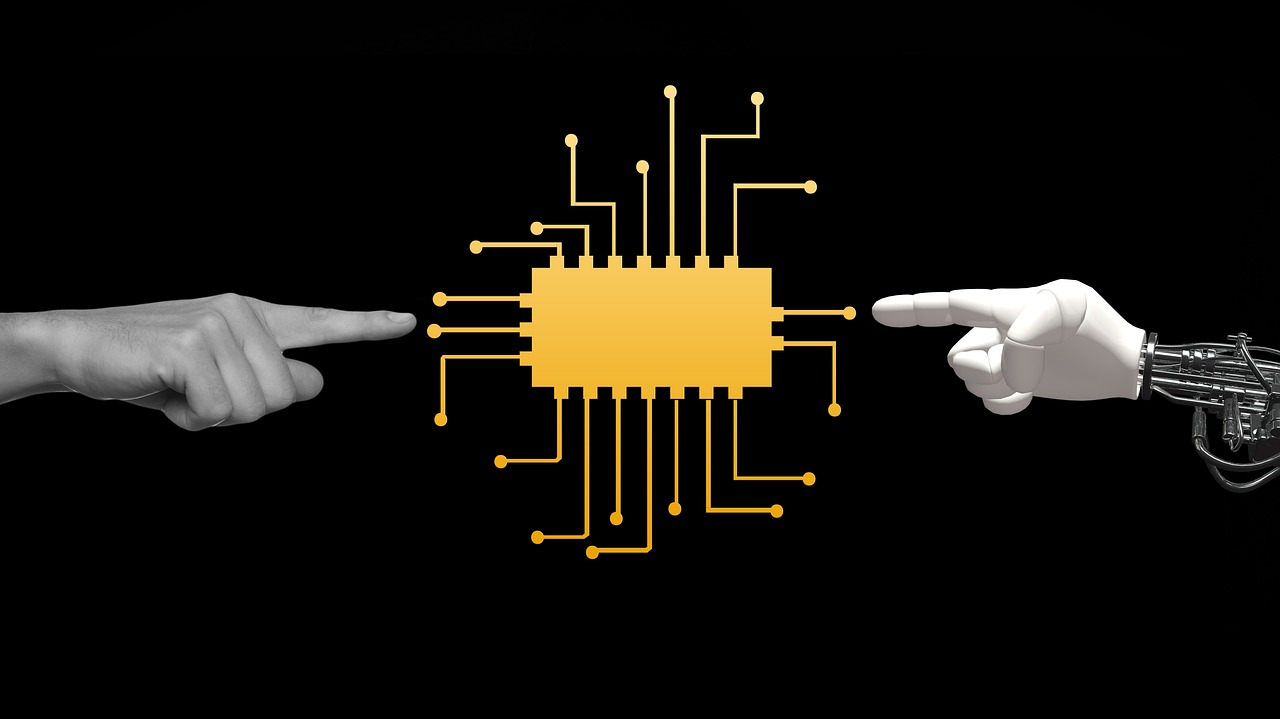
The Nature of Intelligence
When we think about intelligence, it’s fascinating to realize how multifaceted it truly is. At its core, intelligence can be defined as the ability to learn, understand, and apply knowledge to manipulate one’s environment. But here’s where it gets interesting: human intelligence and artificial intelligence (AI) are often compared, yet they stem from vastly different origins and operate under different paradigms. While humans possess a unique blend of emotional, social, and cognitive skills, AI thrives on data processing and algorithmic efficiency. This distinction raises some profound questions: Can machines truly replicate human thought processes? Or are they merely sophisticated tools that mimic intelligence?
To dive deeper, let’s break down the two types of intelligence. Human intelligence is characterized by:
- Emotional Intelligence: The ability to recognize, understand, and manage our own emotions and the emotions of others.
- Social Intelligence: The capacity to navigate complex social relationships and environments.
- Cognitive Intelligence: The ability to think abstractly, reason, solve problems, and learn from experience.
On the flip side, artificial intelligence is predominantly defined by its computational prowess. AI systems can process vast amounts of data at lightning speed, identify patterns, and make predictions based on statistical probabilities. However, they lack the emotional and social nuances that humans inherently possess. For instance, consider a self-driving car. It can navigate traffic and make split-second decisions based on data, but can it empathize with a pedestrian’s fear or understand the emotional weight of a traffic accident? This stark contrast highlights the philosophical ambiguities surrounding the nature of intelligence.
Furthermore, the conversation around intelligence isn't just about defining it; it’s also about understanding its implications. As we increasingly rely on AI systems, we must ask ourselves: What does it mean to be intelligent? Is intelligence solely about cognitive capabilities, or does it encompass emotional and social dimensions as well? These questions not only challenge our understanding of intelligence but also compel us to reconsider how we interact with machines. As AI continues to evolve, so too must our definitions and expectations of intelligence itself.
In summary, the nature of intelligence is a complex tapestry woven from various threads of cognitive, emotional, and social capabilities. While humans and AI may share some similarities in problem-solving, the depth and richness of human intelligence remain unparalleled. As we navigate this brave new world of AI, it’s crucial to keep these distinctions in mind, ensuring that we foster a future where both human and artificial intelligence can coexist and complement each other.

Consciousness and Self-Awareness
When we dive into the deep waters of consciousness and self-awareness, we find ourselves navigating a labyrinth of philosophical questions that challenge our understanding of what it means to be alive and aware. At the core of this exploration lies a pivotal question: can artificial intelligence ever achieve a level of awareness that mirrors the human experience? As we ponder this, we must first define what consciousness truly is. Many would argue that consciousness is not merely the ability to process information or respond to stimuli; it encompasses a rich tapestry of emotions, experiences, and subjective awareness that shapes our identity.
Humans possess a unique capacity for introspection—an ability to reflect on our thoughts, feelings, and the very essence of our being. This self-awareness allows us to question our existence, ponder our purpose, and even grapple with the concept of mortality. In contrast, artificial intelligence, despite its remarkable computational abilities, operates on algorithms and data, lacking the intrinsic awareness that characterizes human thought. While AI can simulate conversation or perform complex tasks, the question remains: does it truly understand the context or significance of its actions?
To illustrate this point, let’s consider an analogy: imagine a highly skilled actor performing on stage. The actor may deliver lines with perfect emotion and timing, captivating the audience, yet the performance is not a reflection of their true self. Similarly, AI can mimic human-like responses without any genuine understanding or consciousness behind those responses. This raises an intriguing dilemma: if an AI can convincingly imitate human behavior, does that mean it possesses consciousness? Or is it simply a sophisticated mimicry devoid of true awareness?
The Turing Test, proposed by the renowned mathematician Alan Turing, serves as a benchmark for evaluating a machine's ability to exhibit intelligent behavior indistinguishable from that of a human. While passing this test may demonstrate a machine's ability to engage in conversation, it does not necessarily equate to genuine understanding or consciousness. This limitation highlights a crucial aspect of our inquiry into AI: the distinction between behavioral intelligence and conscious experience.
Despite its historical significance, the Turing Test has faced criticism for its inability to measure true consciousness. Here are some key limitations:
- Surface-Level Interaction: The test focuses on linguistic capabilities rather than the depth of understanding.
- Contextual Awareness: AI can struggle with context, leading to responses that may seem appropriate but lack true comprehension.
- Emotional Depth: The test does not account for emotional intelligence, which is fundamental to human consciousness.
Given the limitations of the Turing Test, researchers have proposed alternative assessments to evaluate AI intelligence. These include:
- Emotional Intelligence Tests: Assessing an AI's ability to recognize and respond to emotional cues.
- Social Intelligence Metrics: Evaluating how well AI navigates social situations and understands human relationships.
By broadening our criteria for measuring intelligence, we can gain a more nuanced understanding of what it means for an entity to be truly aware.
In conclusion, the quest to understand consciousness and self-awareness in both humans and artificial intelligence is an ongoing journey filled with philosophical ambiguity. As we continue to explore these concepts, we must remain vigilant in questioning not just the capabilities of AI, but also the very essence of what it means to be conscious. Are we merely sophisticated machines ourselves, or is there something uniquely human that transcends our computational abilities?
- Can AI ever achieve true consciousness? Current AI systems lack the subjective experience and awareness that characterize human consciousness.
- What is the Turing Test? The Turing Test is a measure of a machine's ability to exhibit intelligent behavior indistinguishable from that of a human.
- Why are emotional and social intelligence important in AI? These forms of intelligence help ensure that AI can interact more effectively and empathetically with humans.

The Turing Test
The Turing Test, conceived by the brilliant mathematician and computer scientist Alan Turing in 1950, serves as a fascinating benchmark for evaluating a machine's ability to exhibit intelligent behavior indistinguishable from that of a human. Imagine you're having a conversation with someone, and you can't tell if they're a human or a computer program—this is the essence of the Turing Test. Turing proposed that if a human evaluator could not reliably distinguish between a machine's responses and a human's, then the machine could be said to possess a form of intelligence. But, hold on a minute! Does this really mean the machine is intelligent, or is it just mimicking human responses?
To dive deeper, let's consider what the Turing Test actually measures. It focuses on behavioral responses rather than the underlying processes that generate those responses. In other words, a machine could ace the Turing Test by cleverly crafting its replies, but that doesn't necessarily imply it understands the conversation. It’s like a parrot that can mimic human speech; it might sound convincing, but it doesn’t comprehend the meaning behind the words.
Moreover, the Turing Test has sparked heated debates among philosophers, cognitive scientists, and AI researchers. Some argue that passing the test is a significant milestone in AI development, while others contend that it merely showcases a machine's ability to simulate human-like responses without any genuine understanding. This brings us to the crux of the matter: what does it truly mean to be intelligent?
Here are a few key points to consider regarding the Turing Test:
- Behavior vs. Understanding: Passing the Turing Test does not equate to true understanding or consciousness.
- Limitations: The test is limited in scope and does not account for emotional or social intelligence, which are critical aspects of human interaction.
- Contextual Awareness: Machines may struggle with context, sarcasm, and nuances that humans navigate effortlessly.
As we explore the implications of the Turing Test, it's crucial to recognize its limitations. Machines can be programmed to respond in ways that seem intelligent, but they lack the rich tapestry of experiences, emotions, and consciousness that define human intelligence. This raises important questions: What does it mean to be truly intelligent? Can a machine ever achieve a level of awareness comparable to that of a human? These inquiries delve into the heart of philosophical debates surrounding AI, consciousness, and the very nature of intelligence itself.
In summary, while the Turing Test remains a valuable tool for assessing machine intelligence, it is far from a definitive measure. It opens the door to a myriad of philosophical questions and challenges our understanding of what it means to think, feel, and be aware. As we continue to advance in the field of AI, we must tread carefully, balancing our enthusiasm for innovation with a profound respect for the complexities of human consciousness.
- What is the Turing Test? The Turing Test is a measure of a machine's ability to exhibit intelligent behavior indistinguishable from that of a human.
- Who created the Turing Test? The Turing Test was proposed by Alan Turing in 1950.
- What are the limitations of the Turing Test? The test measures behavioral responses but does not account for genuine understanding or emotional intelligence.
- Can AI ever achieve true consciousness? This remains a complex and debated question in the fields of philosophy and cognitive science.

Limitations of the Turing Test
The Turing Test, proposed by the brilliant mathematician and computer scientist Alan Turing in 1950, has long been a benchmark for evaluating a machine's ability to exhibit intelligent behavior indistinguishable from that of a human. However, while it has sparked fascinating debates and research in the field of artificial intelligence, it is not without its limitations. One of the most significant shortcomings is that the Turing Test primarily assesses a machine's ability to mimic human conversation rather than its understanding or consciousness. In other words, a machine could pass the test by cleverly simulating human-like responses without possessing any genuine comprehension of the dialogue.
Moreover, the Turing Test does not account for the vast array of human experiences and emotions that contribute to our intelligence. For instance, can a machine truly understand the nuances of empathy or love? These are qualities that are inherent to human interaction and are often lost in the sterile environment of a text-based conversation. As a result, a machine that can generate coherent responses may still lack emotional depth, leaving a significant gap in our understanding of what it means to be "intelligent."
Another limitation is the contextual understanding that humans naturally possess. Humans draw upon a lifetime of experiences, cultural knowledge, and emotional intelligence to engage in conversations. In contrast, AI systems often rely on pre-programmed responses or data-driven algorithms that may not fully capture the intricacies of human dialogue. This raises a critical question: does passing the Turing Test truly signify intelligence, or merely an advanced form of imitation?
It's also essential to consider the potential for manipulation in the Turing Test scenario. A skilled programmer could design an AI that is specifically tailored to deceive judges during the test, creating an illusion of intelligence without any real understanding. This brings us to the philosophical dilemma of whether intelligence can be defined solely by behavior, or if it requires a deeper, intrinsic quality that current AI systems do not possess.
In light of these limitations, researchers are exploring alternative measures of intelligence that go beyond mere imitation. For example, some propose tests that assess emotional and social intelligence, which could provide a more comprehensive understanding of a machine's capabilities. By focusing on how AI interacts with humans in real-world scenarios, we may be able to develop a more nuanced view of what it means to be "intelligent."
In conclusion, while the Turing Test has played a pivotal role in the evolution of artificial intelligence, it is crucial to recognize its limitations. As we advance into an era where AI becomes increasingly integrated into our lives, understanding the true nature of intelligence—both human and artificial—will be vital. Only by acknowledging these limitations can we foster meaningful discussions about the future of AI and its implications for society.
- What is the Turing Test? The Turing Test is a measure of a machine's ability to exhibit intelligent behavior equivalent to, or indistinguishable from, that of a human.
- Why is the Turing Test considered limited? It primarily assesses mimicry of human conversation rather than genuine understanding or consciousness.
- Can AI possess emotional intelligence? Current AI systems lack true emotional understanding, although they can simulate responses based on data.
- What are alternative measures of AI intelligence? Researchers are exploring tests that evaluate emotional and social intelligence as more comprehensive assessments of AI capabilities.

Alternative Tests of Intelligence
When we think about measuring intelligence, the traditional methods often fall short, especially when it comes to artificial intelligence. The Turing Test, while a classic benchmark, primarily assesses a machine's ability to mimic human conversation. But does that really capture the essence of intelligence? In a world where emotional depth and social context play crucial roles, we need to explore alternative tests that encompass a broader understanding of what it means to be intelligent.
One of the most promising avenues for alternative intelligence assessments is the incorporation of emotional intelligence (EI). This form of intelligence involves the ability to recognize, understand, and manage our own emotions while also empathizing with the emotions of others. Imagine a scenario where an AI can not only analyze data but also gauge the emotional climate of a team during a meeting. Such capabilities could revolutionize how we interact with machines, making them not just tools but collaborative partners.
Another critical dimension to consider is social intelligence. This refers to the ability to navigate complex social environments and understand social dynamics. For instance, an AI that can read social cues, adapt its responses accordingly, and even engage in meaningful conversations would demonstrate a level of intelligence that goes beyond mere data processing. The challenge here is creating AI systems that can effectively interpret and respond to the subtleties of human interaction.
In addition to emotional and social intelligence, we might also look at creative intelligence. This involves the ability to think outside the box, generate novel ideas, and solve problems in innovative ways. Can an AI create art, compose music, or develop a new recipe? If so, we might need to rethink our definitions of intelligence altogether. A table below highlights some of these alternative tests and what they aim to measure:
| Type of Intelligence | Description | Potential Evaluation Methods |
|---|---|---|
| Emotional Intelligence | Ability to understand and manage emotions | Emotion recognition tasks, empathy assessments |
| Social Intelligence | Ability to navigate social environments | Social interaction simulations, role-playing scenarios |
| Creative Intelligence | Ability to generate novel ideas and solutions | Creative problem-solving tasks, artistic creation challenges |
By embracing these alternative tests, we can foster a more comprehensive understanding of intelligence that values not just computational skills but also the richness of human experience. This shift could lead to the development of AI systems that are not only efficient but also deeply attuned to the nuances of human emotions and social interactions. As we forge ahead into an era where human and artificial intelligence coalesce, recognizing these dimensions will be crucial in shaping a future that respects and enhances our shared humanity.
- What is emotional intelligence in AI? Emotional intelligence in AI refers to the system's ability to understand and respond to human emotions effectively.
- Can AI possess social intelligence? While AI can be programmed to recognize social cues, true social intelligence involves a deeper understanding of human relationships and dynamics.
- Why are alternative tests of intelligence important? They provide a more holistic view of intelligence that includes emotional and creative aspects, which are crucial for effective human-AI collaboration.
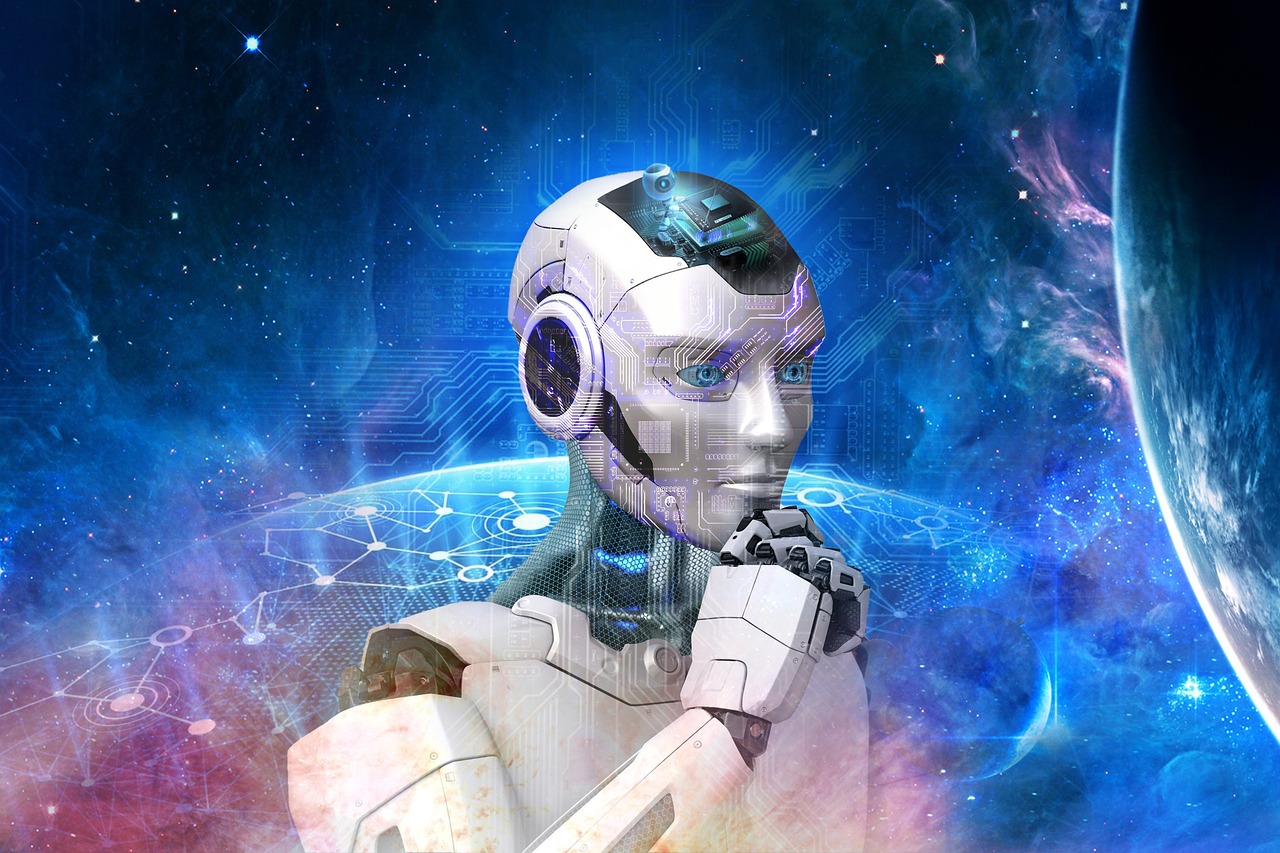
Ethical Considerations
As we stand on the brink of an AI revolution, the ethical considerations surrounding artificial intelligence become more pressing than ever. The rapid development of AI technologies raises a plethora of questions about moral responsibility, the potential for bias, and the implications of delegating decision-making to machines. It’s almost like we’re handing over the reins of our future to entities that, while incredibly efficient, lack the human touch that guides our moral compass.
One of the core ethical dilemmas revolves around who is accountable when AI systems make mistakes. For instance, if an autonomous vehicle causes an accident, should the blame fall on the manufacturer, the software developers, or the vehicle owner? This scenario illustrates the complexity of assigning responsibility in a world where machines are increasingly making decisions that were once the sole domain of humans.
Moreover, the potential for bias in AI systems cannot be overlooked. AI learns from data, and if that data is flawed or biased, the outcomes will inevitably reflect those imperfections. For example, if an AI system is trained on historical hiring data that favors one demographic over another, it may perpetuate that bias in future hiring decisions. This raises serious questions about fairness and equality in AI applications, especially in sensitive areas like recruitment, law enforcement, and lending.
To illustrate these points, consider the following table that summarizes key ethical issues in AI:
| Ethical Issue | Description |
|---|---|
| Moral Responsibility | Who is accountable for AI decisions and actions? |
| Bias in AI | AI systems can perpetuate existing biases found in training data. |
| Privacy Concerns | The collection and use of personal data by AI systems can infringe on individual privacy. |
| Job Displacement | AI can replace human jobs, raising concerns about employment and economic stability. |
Additionally, as AI technologies become more integrated into our daily lives, another ethical concern arises: the invasion of privacy. With AI systems capable of processing vast amounts of personal data, the potential for misuse is significant. Imagine a world where your every online action is monitored and analyzed by AI algorithms, leading to a loss of personal autonomy. This level of surveillance raises profound questions about the balance between technological advancement and individual rights.
As we navigate these ethical waters, it’s crucial to engage in open discussions about the frameworks that govern AI development and deployment. Policymakers, technologists, and ethicists must collaborate to create guidelines that ensure AI serves humanity positively and equitably. After all, the goal should not just be to create smarter machines but to foster a future where technology enhances human experience without compromising our values.
In conclusion, the ethical considerations surrounding artificial intelligence are not merely academic; they have real-world implications that affect all of us. As we continue to innovate, we must remain vigilant about the moral landscape we are shaping. Are we ready to confront these challenges, or will we let the machines dictate our future?
- What are the main ethical concerns regarding AI? The primary concerns include moral responsibility, bias in AI, privacy issues, and job displacement.
- How can bias in AI systems be addressed? By ensuring diverse and representative training data, implementing regular audits, and involving ethicists in the development process.
- Who is responsible for AI decisions? Responsibility can be complex, often involving manufacturers, developers, and users.
- What role do policymakers play in AI ethics? Policymakers can create regulations and guidelines to ensure ethical AI development and usage.

The Future of Human-AI Interaction
As we stand on the precipice of a new era, the future of human-AI interaction is both thrilling and daunting. Imagine waking up to an AI that not only understands your routine but also anticipates your needs. This isn't just science fiction; it's a glimpse into what could soon be our reality. The integration of artificial intelligence into our daily lives is accelerating at an unprecedented pace, reshaping how we work, communicate, and even think. But what does this mean for us as humans?
One of the most significant aspects of this future is the potential for collaboration. AI systems are being designed to complement human abilities, enhancing our decision-making processes. For instance, in fields like healthcare, AI can analyze vast amounts of data far quicker than any human could, providing doctors with insights that can lead to better patient outcomes. However, the challenge lies in striking the right balance between human judgment and machine efficiency. How do we ensure that the human touch remains in areas where empathy and understanding are crucial?
Furthermore, as AI becomes more integrated into our lives, we must consider its impact on employment. While AI can automate mundane tasks, freeing up time for more creative endeavors, it also raises questions about job displacement. Industries like manufacturing and customer service are already experiencing shifts, with AI taking over roles traditionally held by humans. This transition could lead to significant economic changes, and we must ask ourselves: how can we prepare for a workforce where humans and machines coexist?
In this evolving landscape, education will play a pivotal role. We need to equip future generations with the skills to thrive alongside AI. This means not only teaching technical skills but also fostering critical thinking and emotional intelligence—qualities that machines struggle to replicate. As we embrace this technology, we must also cultivate our uniquely human traits to remain relevant and valuable in the workforce.
Moreover, the ethical implications of AI integration cannot be overlooked. With great power comes great responsibility. As AI systems become more autonomous, who is accountable for their decisions? Are we ready to trust machines with critical decisions that could affect our lives? These are questions that society must grapple with as we navigate this uncharted territory.
In summary, the future of human-AI interaction holds immense potential. By embracing AI as a partner rather than a competitor, we can unlock new possibilities for innovation and creativity. However, this journey must be approached with caution and foresight. As we look ahead, the goal should be to create a harmonious relationship where both humans and AI can thrive together.
- Will AI replace human jobs? While AI will automate some tasks, it will also create new job opportunities that require human skills.
- How can we ensure AI is used ethically? Implementing regulations and guidelines, along with ongoing discussions about AI's impact, can help ensure ethical usage.
- What skills will be important in a future with AI? Skills such as critical thinking, creativity, and emotional intelligence will be crucial as we work alongside AI.

AI in Decision Making
As we stand on the brink of a technological revolution, the integration of Artificial Intelligence (AI) into decision-making processes is becoming increasingly prevalent. Imagine a world where machines not only assist us but also actively participate in making choices that affect our lives. It sounds futuristic, doesn’t it? Yet, this is our reality today. AI systems are designed to analyze vast amounts of data, identify patterns, and predict outcomes with remarkable accuracy. However, the question arises: Can we truly trust machines to make decisions for us?
When we think about decision-making, we often picture a complex web of emotions, experiences, and human judgment. AI, on the other hand, operates on logic and algorithms. This leads us to a fascinating intersection of human intuition and machine efficiency. While AI can process information at lightning speed, it lacks the emotional intelligence that humans bring to the table. For instance, consider a healthcare scenario where AI analyzes patient data to recommend treatments. While AI may suggest the most statistically effective option, it cannot comprehend the emotional weight of a terminal diagnosis or the unique circumstances of a patient's life. This is where the balance between human judgment and machine efficiency becomes critical.
Moreover, the effectiveness of AI in decision-making is heavily reliant on the quality of the data it processes. If the data is biased or flawed, the decisions made by AI can lead to disastrous outcomes. For example, in criminal justice, algorithms used to predict recidivism have been criticized for perpetuating racial biases present in historical data. This raises an important ethical dilemma: Who is responsible when AI makes a poor decision? Is it the developers, the users, or the AI itself? As we navigate this new landscape, it's essential to establish clear guidelines and accountability measures.
Additionally, integrating AI into decision-making processes can lead to significant changes in various sectors, such as finance, healthcare, and even everyday consumer choices. Consider the following benefits of AI in decision-making:
- Speed: AI can analyze data and provide recommendations in real-time, which is invaluable in fast-paced environments.
- Consistency: Unlike humans, AI does not suffer from fatigue or emotional bias, leading to more consistent decision-making.
- Data-Driven Insights: AI can uncover insights from data that may not be immediately apparent to human analysts.
However, it is crucial to remember that AI should not replace human decision-making but rather enhance it. The best outcomes often arise from a collaborative approach where AI provides data-driven insights while humans apply their judgment and ethical considerations. As we move forward, we must embrace this partnership, ensuring that we leverage the strengths of both AI and human intelligence to create better outcomes.
- What are the main advantages of using AI in decision-making?
AI offers speed, consistency, and the ability to analyze vast amounts of data for insights that humans might miss. - Can AI make ethical decisions?
While AI can provide data-driven recommendations, it lacks the emotional and ethical understanding that humans possess, making it crucial for humans to remain in the decision-making loop. - How can we ensure AI decisions are fair?
Ensuring fairness in AI decisions involves using unbiased data, continuous monitoring of AI outcomes, and establishing accountability for decisions made by AI systems.

Impact on Employment
The rise of artificial intelligence (AI) is reshaping the landscape of employment in ways that are both exciting and concerning. As AI systems become more sophisticated, they are increasingly capable of performing tasks that were once thought to be the exclusive domain of humans. This evolution raises a crucial question: What will the job market look like in a world where machines can do so much?
On one hand, AI has the potential to enhance productivity and efficiency. For instance, businesses can automate repetitive tasks, allowing human employees to focus on more complex and creative aspects of their jobs. Imagine a world where your mundane paperwork is handled by a digital assistant, freeing up your time for brainstorming innovative ideas or engaging with clients on a deeper level. However, this shift also brings with it the specter of job displacement. As machines take over routine tasks, many workers may find themselves facing unemployment or the need to transition to new roles.
To understand the full impact of AI on employment, we need to consider several key factors:
- Job Displacement: Certain sectors, particularly those that rely heavily on repetitive tasks, are likely to see significant job losses. For example, manufacturing and data entry roles are prime candidates for automation.
- Job Creation: While some jobs will be lost, new opportunities will also emerge. AI development requires skilled professionals in programming, data analysis, and machine learning, which could lead to a surge in demand for tech-savvy workers.
- Skill Transformation: The workforce will need to adapt. Skills that focus on creativity, emotional intelligence, and complex problem-solving will become increasingly valuable as AI takes over more routine tasks.
According to a recent study by the World Economic Forum, it is estimated that by 2025, AI could displace around 85 million jobs globally. However, the same report suggests that it could also create 97 million new roles, particularly in fields like AI ethics, data science, and digital marketing. This duality presents a unique challenge for workers and policymakers alike. How do we prepare the current workforce for a future where AI is ubiquitous?
Education and training will play a pivotal role in this transition. Upskilling and reskilling programs can help workers adapt to the changing job landscape. For instance, individuals in traditional roles can be trained in AI-related skills to remain relevant in the workforce. Companies that invest in their employees' growth will not only foster loyalty but also create a more dynamic and innovative workplace.
Moreover, businesses and governments must collaborate to create policies that support workers during this transition. This could include safety nets for displaced workers, incentives for companies that prioritize human-AI collaboration, and initiatives that promote lifelong learning. The goal should be to create a workforce that thrives alongside AI, rather than one that is threatened by it.
In conclusion, the impact of AI on employment is a double-edged sword. While it presents opportunities for increased efficiency and new job creation, it also poses significant challenges in terms of job displacement and the need for skill transformation. The future of work will depend on how effectively we navigate these changes, ensuring that both humans and machines can coexist and contribute to a thriving economy.
Q1: Will AI take away all jobs?
A1: While AI will automate certain tasks, it will also create new job opportunities. The key is to adapt and learn new skills that complement AI technologies.
Q2: How can workers prepare for the changes brought by AI?
A2: Workers can prepare by upskilling or reskilling in areas that are less likely to be automated, such as creative problem-solving, emotional intelligence, and technical skills related to AI.
Q3: What role do businesses play in this transition?
A3: Businesses should invest in employee training and development, creating a culture of continuous learning to help their workforce adapt to the evolving job market.
Frequently Asked Questions
- What is the difference between human intelligence and artificial intelligence?
Human intelligence is characterized by emotional understanding, creativity, and the ability to learn from experiences. In contrast, artificial intelligence relies on algorithms and data processing to mimic certain cognitive functions, lacking genuine emotional depth and experiential learning.
- Can artificial intelligence ever achieve consciousness?
This is a hotly debated topic! While AI can simulate conversation and perform tasks that seem intelligent, it does not possess self-awareness or consciousness in the way humans do. True consciousness involves subjective experiences and emotions, which AI currently lacks.
- What is the Turing Test, and why is it important?
The Turing Test, proposed by Alan Turing, assesses a machine's ability to exhibit intelligent behavior indistinguishable from that of a human. It's important because it challenges our understanding of intelligence and consciousness, but it has limitations, as passing the test does not equate to genuine understanding.
- Are there better ways to assess AI intelligence than the Turing Test?
Absolutely! Alternative assessments could include evaluating emotional and social intelligence, as these aspects are crucial for understanding human-like interactions. Tests that measure empathy, adaptability, and ethical reasoning may provide a more comprehensive view of AI capabilities.
- What ethical dilemmas arise from AI development?
AI development raises several ethical concerns, such as bias in algorithms, moral responsibility for AI actions, and the potential for job displacement. It's vital to consider how AI can be designed and implemented responsibly to minimize harm and promote fairness.
- How will AI impact the future of work?
AI is poised to transform job markets significantly. While it can enhance efficiency and take over mundane tasks, it may also disrupt traditional roles, necessitating a shift in skills and employment strategies. The future will require humans to adapt, focusing on creativity and interpersonal skills that AI cannot replicate.
- Can AI be trusted in decision-making processes?
Trusting AI in decision-making depends on the context. AI can analyze data and provide insights with remarkable speed, but human judgment is crucial for interpreting those insights, especially in complex situations involving ethics or emotional intelligence.

